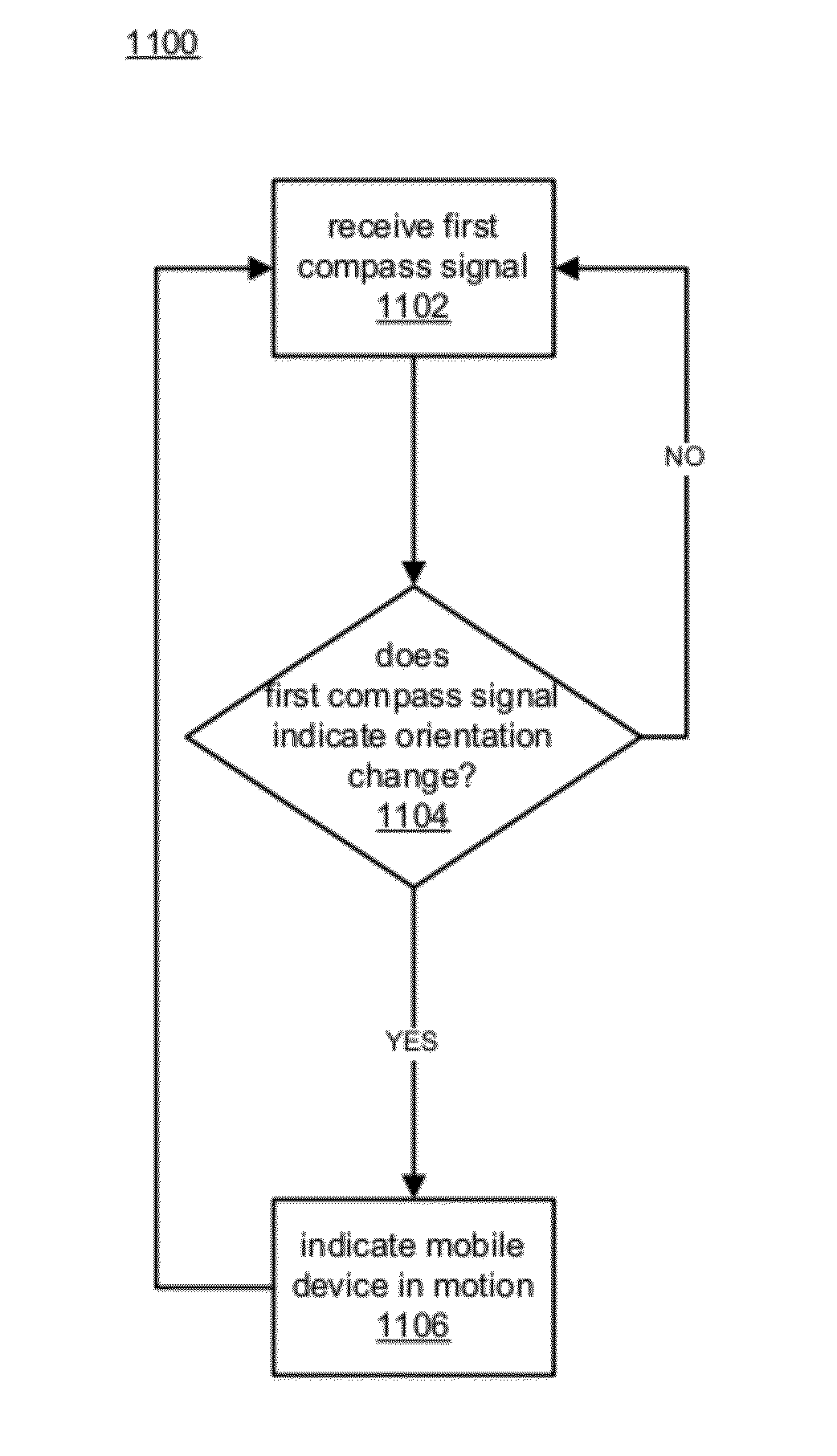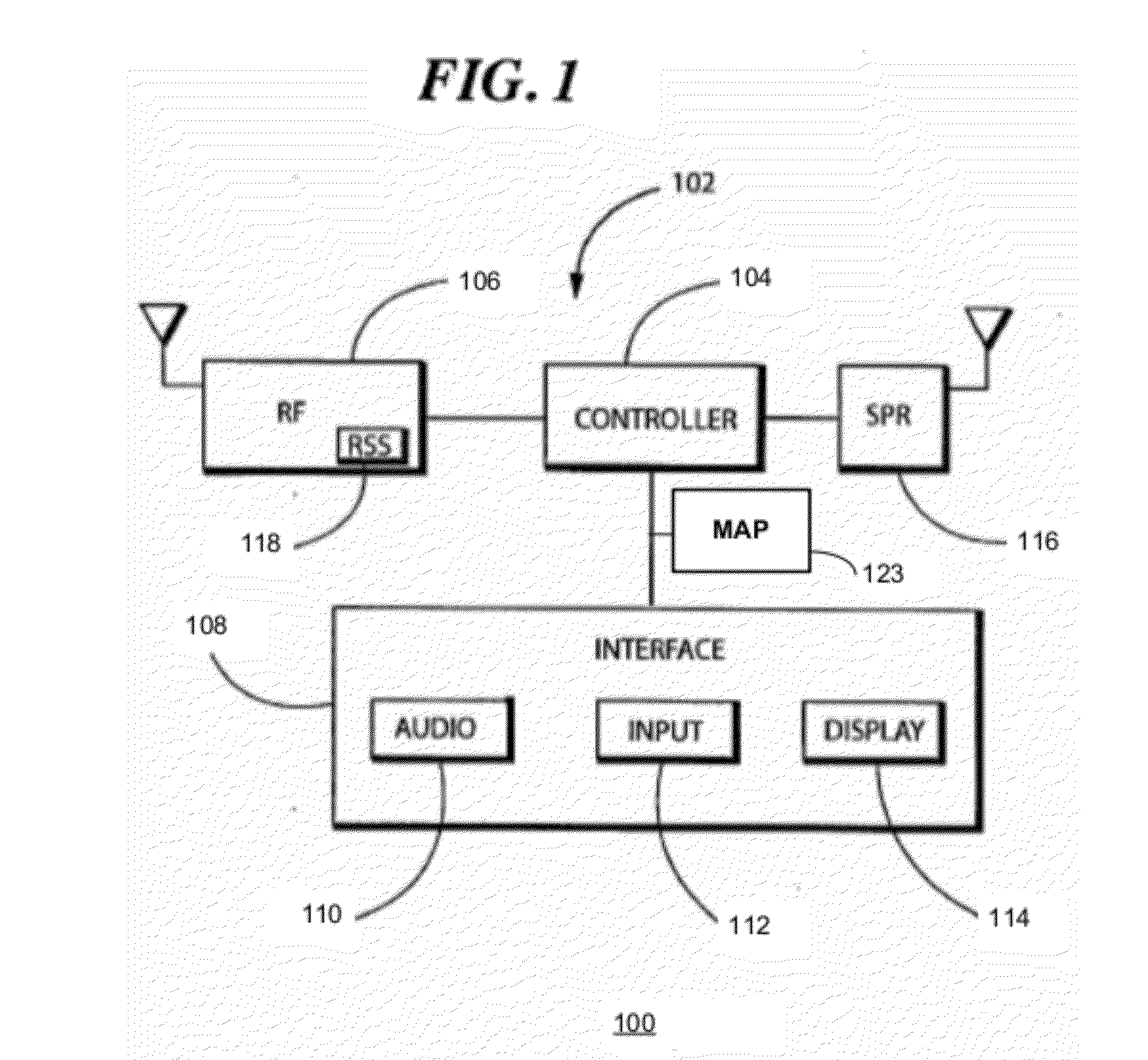Systems and methods for selectively invoking positioning systems for mobile device control applications using accelerometer measurements
- Summary
- Abstract
- Description
- Claims
- Application Information
AI Technical Summary
Benefits of technology
Problems solved by technology
Method used
Image
Examples
Embodiment Construction
[0026]Described herein are systems and methods for selectively permitting use of a mobile device while the device is in motion. As used herein, “motion” of the mobile device may refer to any information regarding the context and movement of the mobile device, an associated vehicle and / or its user such as physical displacement, a geographic location, bearing, speed or acceleration. These systems and methods can be implemented in a number of different configurations. Several exemplary configurations are discussed below with reference to FIGS. 1-4. These configurations are not mutually exclusive, and it is anticipated that elements from each may be combined and still fall within the scope of the invention. After discussing the exemplary configurations of FIGS. 1-4, techniques that may be implemented in accordance with different embodiments are discussed with reference to FIGS. 5-7. Finally, techniques for selectively invoking a positioning system are discussed and illustrated with refe...
PUM
 Login to View More
Login to View More Abstract
Description
Claims
Application Information
 Login to View More
Login to View More - R&D
- Intellectual Property
- Life Sciences
- Materials
- Tech Scout
- Unparalleled Data Quality
- Higher Quality Content
- 60% Fewer Hallucinations
Browse by: Latest US Patents, China's latest patents, Technical Efficacy Thesaurus, Application Domain, Technology Topic, Popular Technical Reports.
© 2025 PatSnap. All rights reserved.Legal|Privacy policy|Modern Slavery Act Transparency Statement|Sitemap|About US| Contact US: help@patsnap.com



